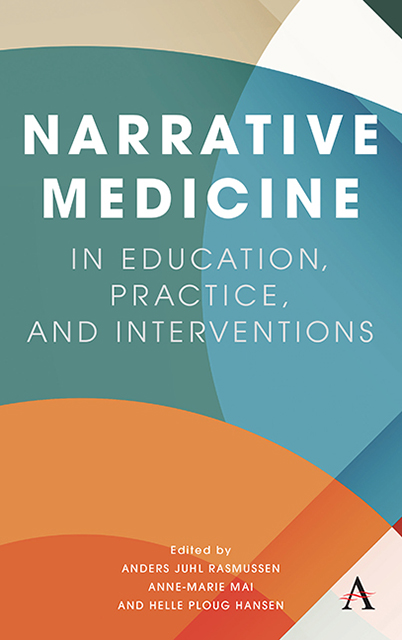Chapter 2 - The Role of Narrative Structures and Discursive Genres in Healthcare Education and Practice
Published online by Cambridge University Press: 08 June 2023
Summary
This chapter argues that knowledge about narrative structures and discur-sive genres helps health professionals to gain a better understanding of what their patients are telling them about their illness. Even a basic know-ledge about such structures and genres can permit insights into what is “unspoken,” what patients do not say in their encounter with the practi-tioner. The first part of the chapter sets forth certain linguistic structures, which organize speech events in sentences, narratives, and larger structures of narrative genre. It emphasizes that both literary and nonliterary genres are used to organize our experiences and intuitions, our interpersonal rela-tions, and our actions in the world. (Mikhail Bakhtin describes the ubi quity of nonliterary “speech genres” in human affairs.) In its second part, the chapter transposes the provision of linguistic structures for use in the health sector. It describes how the understanding and awareness of narrative and genre can help the practitioner organize and possibly fill out patients’ nar-ratives through the practised appreciation of the narrative components they are using. In this, it encourages practitioners to listen more fully and carefully to the people they serve. The aim of the chapter is to demonstrate the way an understanding of how practical knowledge about narrative and generic structures benefits the individual health professional and facilitates the pa-tient–caretaker relationship in the clinic.
One of the most fascinating aspects of the language we share is the fact that very young children often can be heard conjugating irregular verbs such as “I know,” whose irregular past tense is “I knew,” as if they were regular verbs: “I knowed.” In a similar fashion, young children as young as four years old recognize that a story is not well formed (Polkinghorne, 1988, p. 20) so that they balk when, for instance, one starts “The Three Little Pigs” with the brick house, and they do so even if they have never heard the story before. These facts suggest that the seeming volitional and spontaneous language we deploy is, in fact, ordered by discursive structures, which organize the reality they seem to represent. In his passionate study of the culture and community of the deaf, Dr. Oliver Sacks notes that
(…) language and thought, for us, are always personal – our utterances express ourselves, as does our inner speech. Language often feels to us, therefore, like an effusion, a sort of spontaneous transmission of self.
- Type
- Chapter
- Information
- Publisher: Anthem PressPrint publication year: 2022



